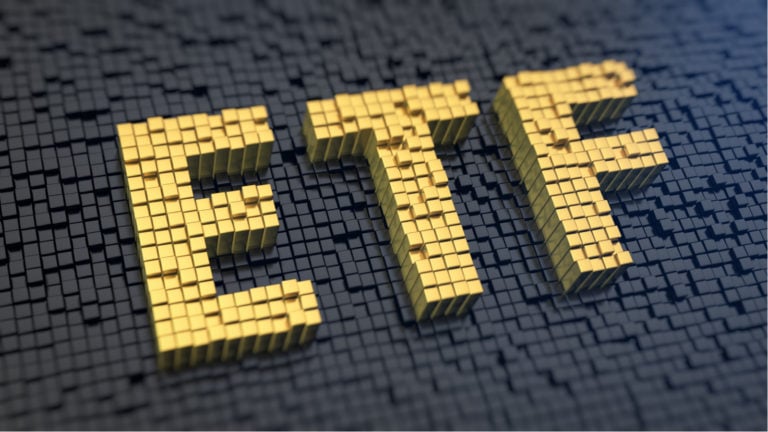Investors were looking for ETFs to buy after the five nations that comprise the BRICS nations recently met to invite six more emerging market countries to join their economic club.
Brazil, Russia, India, China, and South Africa asked Argentina, Egypt, Ethiopia, Iran, Saudi Arabia, and the United Arab Emirates to join with them in an economic and geopolitical union. The six were chosen out of 22 applicant countries.
Dubbed the BRICS-11, these countries represent 36% of the global gross domestic product and 47% of the world population. It’s a big deal.
I’m sure a new ETF will be launched to recognize the top companies within the BRICS-11. Until then, here are three ETFs to buy that allow investors to invest in some of these companies.
To qualify for inclusion, the three ETFs will have minimum net assets of $250 million, a median market capitalization of $1 billion, and generate a dividend yield of at least 1.5%.
Don’t look now, but here comes the BRICS-11.
iShares MSCI Emerging Markets Ex China ETF (EMXC)

The iShares MSCI Emerging Markets Ex China ETF (NASDAQ:EMXC) is the largest of the three ETFs with net assets of $5.2 billion.
Launched in July 2017, the passive ETF tracks the performance of the MSCI Emerging Markets Ex China Index, a collection of mid- and large-cap stocks from 23 of 24 emerging markets countries, excluding China.
As a result, the three top sectors by weight are India (21.50%), Taiwan (21.04%), and South Korea (17.95%). Current BRICS countries include India, Brazil, and South Africa. If you include the BRICS-11, Saudi Arabia and the United Arab Emirates are also represented. As for sector weightings, the three most significant are technology (26.79%), financials (24.71%), and materials (10.12%).
The ETF’s top 10 holdings account for 23.58% of EMXC’s net assets. Several are listed on U.S. stock exchanges. It has 705 total holdings.
It has an average market cap of $30.2 billion and a 2.3% dividend yield. A $10,000 investment at inception in 2017 is worth $11,779 as of Sept. 1.
WisdomTree Emerging Markets State-Owned Enterprises Fund (XSOE)

The WisdomTree Emerging Markets State-Owned Enterprises Fund (NYSEARCA:XSOE) invests in emerging market companies that don’t have 20% or more state ownership.
The ETF tracks the performance of the WisdomTree Emerging Markets ex-State-Owned Enterprises Index. The index was established in August 2014. The ETF has 586 holdings invested among its $2.2 billion in net assets. The total market cap of all of its holdings is $8.18 trillion. Large caps of $10 billion or more account for nearly 69% of the portfolio, with mid-caps and small caps accounting for the rest.
The average holding has price-t0-earnings and price-to-sales ratios of 18.45x and 1.35x, respectively. It currently has a 2.6% dividend yield.
The top three countries by weight are China (25.22%), India (19.31%), and Taiwan (16.94%). The top three sectors are technology (23.16%), consumer discretionary (19.81%), and financials (15.57%).
Since its inception in December 2014, it has had an annualized total return of 3.4% through June 30, 2023.
SPDR S&P China ETF (GXC)

The SPDR S&P China ETF (NYSEARCA:GXC) is the smallest of the three ETFs by assets, with $857.4 million in net assets. It tracks the performance of the S&P China BMI Index, a collection of stocks based in China that are available to foreign investors. It is the oldest of three funds, established in March 2007.
A $10,000 investment at inception was worth $13,302 as of Sept. 1. As recently as mid-2020, that $10,000 was worth more than $22,000.
If you don’t want a large concentration of Chinese stocks, GXC is probably not for you because the country accounts for 99.67% of the net assets. The top 10 holdings account for 34.3% of the entire portfolio, with Tencent Holding (OTCMKTS:TCEHY) and Alibaba (NYSE:BABA) combining for over half the top 10.
The top sectors by weight include consumer discretionary (27.25%), communication services (16.93%), and financials (15.22%).
The ETF pursues a sampling process to mimic the index. Therefore, while the index has 2044 holdings, the ETF has less than half that at 945. The weighted average market cap is $88.5 billion, well within the large-cap category. The typical holding has a price-to-book and P/E ratio of 1.24x and 10.10x. GXC has a 2.93% dividend yield.
On the date of publication, Will Ashworth did not have (either directly or indirectly) any positions in the securities mentioned in this article. The opinions expressed in this article are those of the writer, subject to the InvestorPlace.com Publishing Guidelines.
